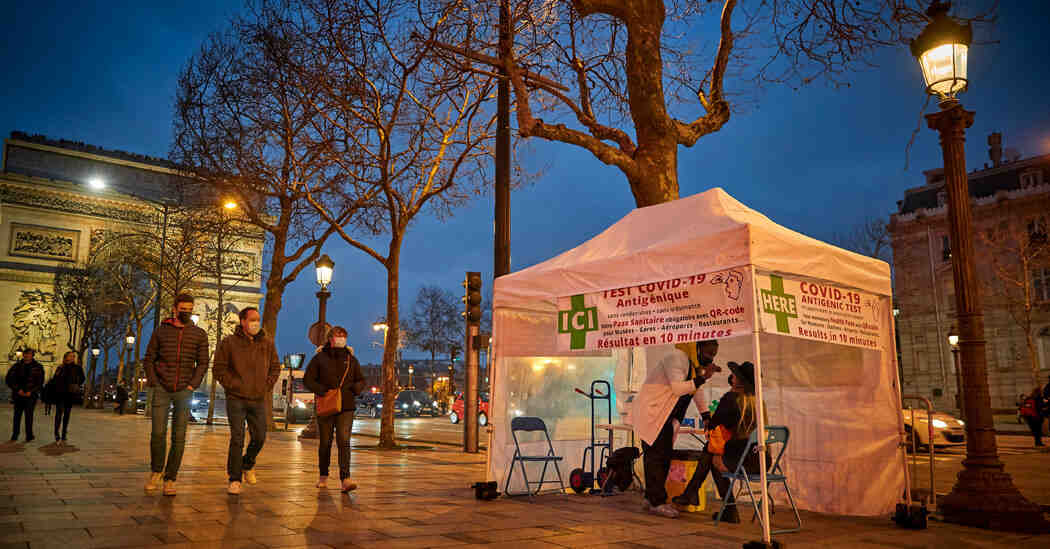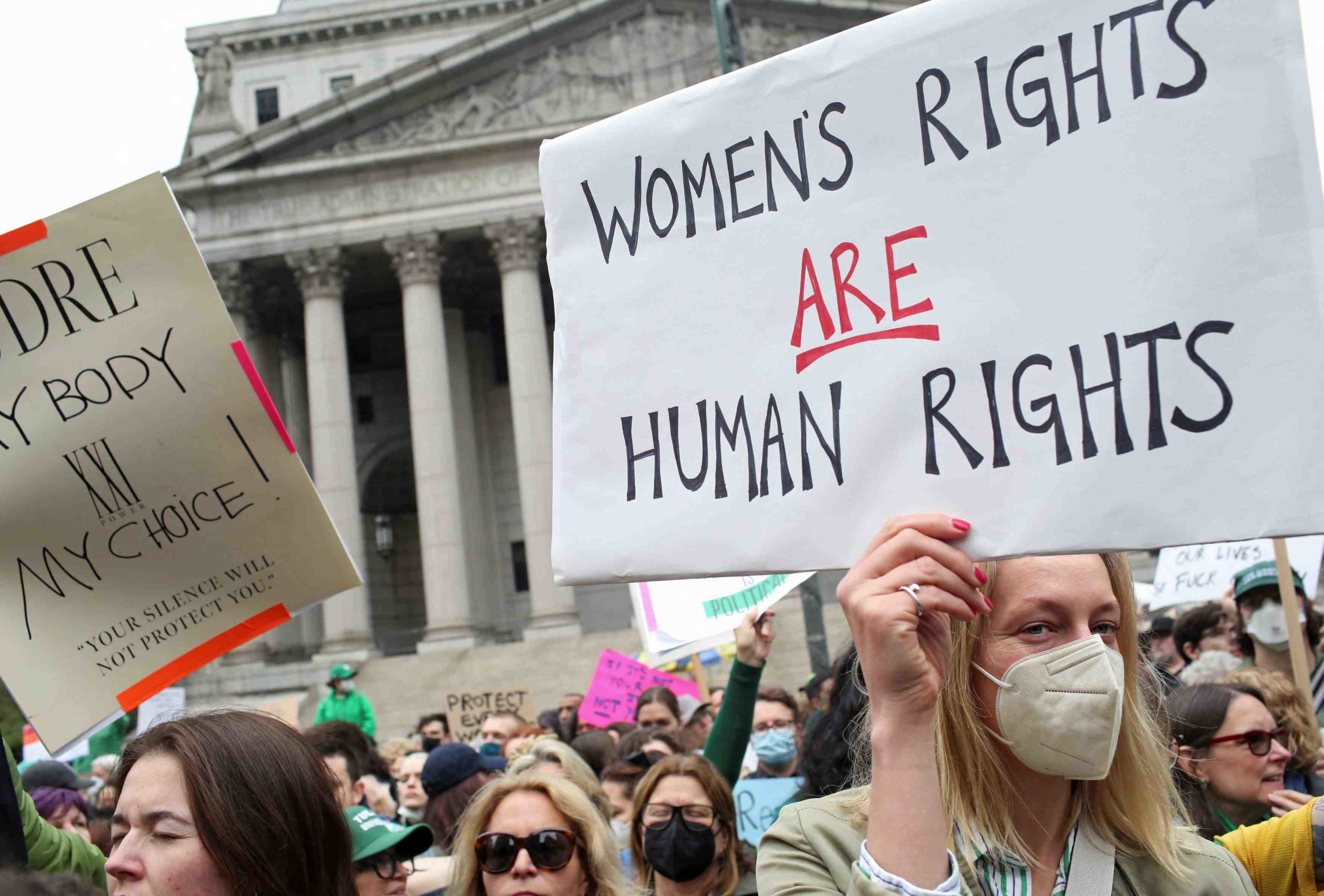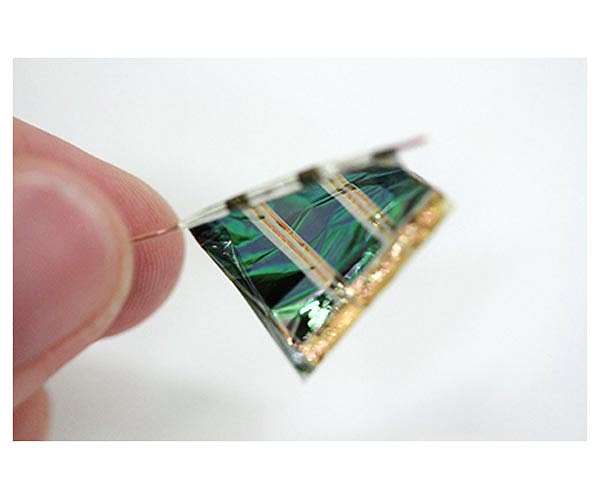When Puerto Rico was rocked by its worst power outage in months, leaving virtually all of the island’s 1.5 million customers without power for days, the town of Adjuntas was an oasis.
On a Thursday morning in early April when schools were closed, children filled seats at an air-conditioned movie theater at a community center, a pizzeria prepared its kitchen for the lunchtime rush and the local barber welcomed customers looking for a quick cut.
The contrast shows why Adjuntas, a community of about 18,000 in the densely forested mountains of central Puerto Rico, has become a showcase for how solar power could address one of the island’s most vexing problems — an energy grid that has struggled to recover , after Hurricane María virtually wiped it out in 2017.
Thanks largely to the work of Casa Pueblo, a nonprofit dedicated to conservation, about 400 homes and businesses in Adjuntas have solar power, including more than a dozen businesses connected to a small solar-powered grid . With backup batteries, the systems can operate during a power outage, keeping businesses running and turning the organization’s headquarters into a haven for people using medical equipment that needs to be powered.
“When you have energy security, you take the weight off the shoulders of the employees and the families who come into the business,” said Ángel Irizarry Feliciano, owner of Lucy’s Pizza, which continued to operate during the blackout. “It was a relief that we could continue to provide a service to our employees without any disruptions or reductions in working hours.”
But the situation in Adjuntas also shows how far the rest of Puerto Rico needs to go on renewable energy, for all the seemingly obvious reasons: the island’s long and sunny days; its need to import all other fuels, making power generation costly; and of course its constantly failing power grid.
Though the number of solar installations has increased in recent years, solar power accounts for just 2.5 percent of Puerto Rico’s total energy production, government data show. The rest comes from plants powered by imported natural gas, coal and oil, and some from wind power.
Many Puerto Ricans can’t afford to spend the $27,000 a typical solar power system might cost, and the government — which emerged from unprecedented bankruptcy in March — only began setting specific renewable energy targets in 2019. Some who can afford to add solar panels to their homes have been deterred by the chaotic state of Puerto Rico’s finances, particularly the proposal to charge solar customers a fee to prop up public utilities.
Casa Pueblo’s installations are funded with funds from foundations in Puerto Rico and abroad, as well as from the sale of coffee grown in Adjuntas. Since Hurricane María, the organization has expanded its commitment to solar energy adoption to communities in other parts of the island.
“We need public policy to create a business model that focuses on helping you generate your own electricity and not just one that supplies electricity,” said Arturo Massol Deyá, deputy director of Casa Pueblo. “People are fed up with constant power outages and wrecking their devices.”
Power was not fully restored for four days after the latest outage, which began on April 6 after a fire at a power plant in the southwestern city of Guayanilla. The island-wide shutdown triggered a cascade of problems: many also had their water cut off, hospitals had to turn to backup generators, and schools and businesses were closed.
The blackout sparked protests and called on the government to end its contract with Luma Energy, the private energy company that took over the utility last June on promises to restore the grid. Puerto Rico Governor Pedro Pierluisi Urrutia opposed the idea. But the constant power outages, along with monthly utility bills that have risen 46 percent over the past year, have increased frustration with the utility, which is operated by a Canadian-American company under a 15-year contract signed last year .
“While some politicians ignore the state of the power grid inherited from Luma and assign blame without facts, we will remain focused on Puerto Rico’s energy future,” Luma said in a statement to The New York Times.
Puerto Rico has ambitions to do more with renewable energy. In 2019, the government passed a clean energy law that mandates that 100 percent of the island’s electricity must come from renewable sources by 2050 and includes a promise to use federal money to build renewable energy projects that serve low-income communities reach.
The board that oversees Puerto Rico’s finances approved 18 renewable energy projects in March with a goal of increasing clean energy production to 23 percent of the island’s total by the end of 2024. In February, the US Department of Energy began a two-year study of Puerto Rico’s clean energy options. And the Federal Emergency Management Agency and the Department of Housing and Urban Development have committed $12 billion to overhaul the island’s energy economy.
Despite proposing such an ambitious renewable energy target, the oversight body raised the prospect of charging consumers who have solar panels on their homes by making them pay for the electricity they generate.
Under the proposal, made to pay off Puerto Rico Electric Power Authority’s $9 billion debt, new solar customers would have had to pay for every kilowatt of solar power they generated. Because the proposal also included a plan to increase tariffs for conventional electricity, it was thrown out by the governor in March. But proponents of solar energy say they fear the fee – which some call a solar tax – could be revived as negotiations for a new deal continue.
“We have to find a way to deal with the debt,” said Francisco Berrios Portela, director of the energy policy program at the Puerto Rico Department of Economic Development and Commerce. “But it cannot be that a tax is levied on the generation produced by this type of system that we are promoting.”
Uncertainty about whether they’ll have to pay more for a solar power installation on a home or business has put off consumers like María Lizardi Córdova, an accountant living in San Juan. Ms. Lizardi Córdova can see a neighbor’s solar panels from her bedroom window and knows many other people in the neighborhood who have decided to invest in solar energy, but she thinks it’s too early to make the switch herself.
“This is not the right time and it has to do with all the uncertainty about additional costs for the solar energy and my expenses,” said Ms. Lizardi Córdova. “The situation gets more complicated with the debt.”
For Puerto Ricans with medical needs like refrigeration for insulin or power for dialysis machines, outages can be tricky — and the benefits of a solar-powered backup system are overwhelming.
In Adjuntas, Casa Pueblo runs a special project that provides solar panels to people with medical needs, like Juan Molina Reyes, a farmer who grows plantains, coffee, and oranges.
Mr Molina Reyes’ father, Luis, 75, suffered a stroke in August and needs breathing assistance. He says he ran through seven gas generators to keep his father’s oxygen concentrator running when the power grid went down.
That changed in February when Mr Molina Reyes’ family received solar panels after asking the charity for support. He said he feels lucky to have her.
“It was annoying to know that my father would pass if the system was going to fail at any moment,” said Mr. Molina Reyes. “It was a tough fight.”
Does Puerto Rico use solar power?

According to the NREL study, Puerto Rico has the potential to produce four to five times as much solar energy as it needs to meet its current housing needs. This may interest you : Why solar energy is the future ?.
How does Puerto Rico produce electricity? Energy Sources Most of Puerto Rico’s electricity is generated by oil and natural gas fired power plants. Puerto Rico also has 21 reservoirs that generate hydroelectric power.
Why is there no power in Puerto Rico?
Puerto Rico’s power system was decimated by Hurricane Maria in 2017, triggering the second-longest power outage in the world. See the article : Suntrace and Baywa r.e. complete largest off-grid solar-battery hybrid system for mining industry. Emergency repairs were carried out at the time, but rebuilding and substantial work to modernize the island’s aging power grid has not yet begun.
Does Puerto Rico have electricity?
Power has been restored to around 87 percent of all electricity customers, nearly three days after a circuit breaker failure at a main power plant caused an island-wide outage.
How many people in Puerto Rico have no power?
The island’s fragile power grid was slowly recovering from its recent power outage, which may have been caused by a failed circuit breaker.
Why is Puerto Rico having power outages?
The utility said Thursday that the “massive island-wide power outage” may have been caused “by a circuit breaker failure” at the Costa Sur plant. Acevedo, LUMA vice president, said the cause of the fire is still under investigation, noting that the equipment is up to date with maintenance inspections.
Is Tesla solar available in Puerto Rico?
Tesla Powerwall Puerto Rico with Sunnova Sunnova actually has a leasing option where you can get the Tesla Powerwall Puerto Rico for a flat monthly fee along with your solar panel system that you will install with them.
How much is Tesla solar per month?
| Federal State | Monthly subscription (small) | Estimated annual generation |
|---|---|---|
| California | $65 | $1080-$1510 |
| Connecticut | $50 | $760-$1080 |
| Massachusetts | $50 | $760-$1190 |
| New Jersey | $50 | $650-$860 |
What states is Tesla solar available in?
In addition to California, rentals are offered in Arizona, Connecticut, Massachusetts, New Jersey and New Mexico. Electric-car maker Tesla bought solar installer SolarCity for $2.6 billion in 2016, but installations have slumped in recent quarters.
Does Tesla work in Puerto Rico?
Tesla was incorporated as a Puerto Rico corporation on November 22, 2017.
What cities run on solar power?
Honolulu leads the United States for solar energy per capita among the cities surveyed, followed by San Diego; Albuquerque, New Mexico; San Jose, California; and Burlington, Vermont…. Of total installed solar PV:
- Los Angeles, California.
- San Diego, CA
- Honolulu, HI.
- Phoenix, AZ.
- San Antonio, Texas.
- New York, NY.
- San Jose, CA
- Albuquerque, New Mexico.
Can a city be powered by solar panels?
The city of New Bedford, Massachusetts, has reduced electricity spending by installing solar power on city buildings and public spaces, including installations at three schools, a public gym and the Department of Public Infrastructure building.
What states in the US use solar energy?
| Federal State | rank | Solar share of total renewable energy production |
|---|---|---|
| California | 1 | 29.1% |
| North Carolina | 2 | 44.6% |
| Arizona | 3 | 43.0% |
| Nevada | 4 | 42.4% |
Are there any cities with 100% renewable energy?
Reykjavik, Iceland, gets all of its electricity from geothermal and hydroelectric power and is aiming to make its entire vehicle fleet — both public and private — “fossil-free” by 2040. Basel, the third largest city in Switzerland, gets most of its electricity from hydropower, plus 10 percent from wind.
How many power plants are in Puerto Rico?

Puerto Rico’s 20 hydroelectric power plants, most of which are more than 70 years old, are located on reservoirs that often provide drinking and irrigation water and electricity.
How many power plants are there? As of December 31, 2020, there were 23,417 electric generators in approximately 11,070 utility-scale electric power plants in the United States. Utility-scale power plants have a nominal power generation capacity of at least 1 megawatt (MW).
Who owns the most power plants in the US?
| rank | Surname | owner |
|---|---|---|
| 1 | Grand Coulee | U.S. Bureau of Reclamations |
| 2 | Palo Verde | Arizona Public Service (29.1%) Salt River Project (17.5%) Other (53.4%) |
| 3 | western county | FPL |
| 4 | W.A. Parish | NRG energy |
Who owns most nuclear power plants?
Until then, here are the ten countries with the most operational nuclear capacity in 2021.
- United States – 91.5 GW.
- France – 61.3 GW.
- China – 50.8 GW.
- Japan – 31.7 GW.
- Russia – 29.6 GW.
- South Korea – 24.5 GW.
- Canada – 13.6 GW.
- Ukraine – 13.1 GW.
What are the largest power plants in the US?
The Grand Coulee Dam in Washington State has a capacity of 6,809 MW (megawatts), the largest in America.
Who has the largest power grid in the United States?
Grand Coulee – 6,809 MW The 6,809 MW Grand Coulee hydroelectric power station on the Columbia River in Washington is by far the largest power station in the USA. The facility is owned and operated by the US Bureau of Reclamation. It has been in operation since 1941 and produced 26.46 TWh of electricity in 2012.
Who owns the electrical power plants in Puerto Rico?
One of those two companies is Luma, a private company that won a contract last year to distribute electricity on the island. The other is the Puerto Rico Electric Power Authority, known as PREPA, which used to be in charge of the entire system and now continues to operate the power plants.
Who owns the power company in Puerto Rico?
The state utility is the sole utility for Puerto Rico, where it serves more than 1.4 million residential and commercial customers.
Are power plants owned by the government?
Today, nearly all commercial reactors in the US are privately owned, and the nuclear industry as a whole has far greater private ownership and less concentration than any other country. Yet the government remains more involved in commercial nuclear power than in any other industry in the United States.
Who is the power company in Puerto Rico?
LUMA Energy is the electric utility company responsible for power distribution and transmission in the Commonwealth of Puerto Rico.
Where does Puerto Rico get its electricity?
For fiscal 2021, natural gas power plants generated 44% of the island’s total electricity, petroleum 37%, coal 17%, and renewable energy 3%. The Puerto Rico Energy Public Policy Act requires the Commonwealth to source 40% of its electricity from renewable resources by 2025, 60% by 2040, and 100% by 2050.
Why does Puerto Rico keep losing power?
Why don’t we have power?†Behind the outages are the same problems that have plagued Puerto Rico’s electrical grid for decades: obsolete equipment, lack of maintenance, and mismanagement and corruption of an inefficient system in the past.
Who owns the electrical power plants in Puerto Rico?

PREPA is a government agency that owns the power transmission and distribution systems for the Main Island, Vieques and Culebra and approximately 86% (nearly 5,000 megawatts) of the installed power generation capacity.
Are power plants owned by the state? Today, nearly all commercial reactors in the US are privately owned, and the nuclear industry as a whole has far greater private ownership and less concentration than any other country. Yet the government remains more involved in commercial nuclear power than in any other industry in the United States.
Who owns the power grid in Puerto Rico?
One of those two companies is Luma, a private company that won a contract last year to distribute electricity on the island. The other is the Puerto Rico Electric Power Authority, known as PREPA, which used to be in charge of the entire system and now continues to operate the power plants.
Who owns the power company in Puerto Rico?
The state utility is the sole utility for Puerto Rico, where it serves more than 1.4 million residential and commercial customers.
What happened to Puerto Rico’s power grid?
In 2017, Hurricane Maria hit Puerto Rico, crippling power across the island and further exposing the vulnerability of the already fragile power grid. Some residents have been without power for over a year.
Was Puerto Rico’s power grid publicly owned?
Solar vs. These power plants are still owned by the Puerto Rico Electric Power Authority, the local state-owned utility that was privatized, which turned over the grid to LUMA and which most pundits blame for years of poor management.
Who owns the power company in Puerto Rico?
The state utility is the sole utility for Puerto Rico, where it serves more than 1.4 million residential and commercial customers.
Who owns PREPA in Puerto Rico?
| power plant | capacity | owner |
|---|---|---|
| AES Puerto Rico | 454 MW | AES Corporation |
| Aguirre station wagon | 592 MW | PREPARATION |
| Aguirre Thermoelectric | 900 MW | PREPARATION |
| Cambalache | 247 MW | PREPARATION |
Who owns the electric company in Puerto Rico?
The Federal Emergency Management Agency has allocated nearly $10 billion in taxpayer dollars to the effort. The Puerto Rico Electric Power Authority (PREPA), the state utility, now only manages electricity generation.
Who is the power company in Puerto Rico?
LUMA Energy is the electric utility company responsible for power distribution and transmission in the Commonwealth of Puerto Rico.
Where does Puerto Rico get its electricity from?
For fiscal year 2021 (July 2020 to June 2021), fossil fuel-fired power plants generated approximately 97% of Puerto Rico’s electricity. Natural gas makes up about 44%, oil about 37% and the island’s only coal-fired power station about 17%. Renewable energy accounted for about 3% of the island’s electricity generation.
Who owns PREPA in Puerto Rico?
Under a 15-year contract, LUMA Energy, LLC has assumed operation and maintenance of Puerto Rico’s power transmission and distribution system from the Puerto Rico Electric Power Authority (PREPA).
Was Puerto Rico’s power grid publicly owned?

Solar vs. These power plants are still owned by the Puerto Rico Electric Power Authority, the local state-owned utility that was privatized, which turned over the grid to LUMA and which most pundits blame for years of poor management.
Who owns the power grid in Puerto Rico? One of those two companies is Luma, a private company that won a contract last year to distribute electricity on the island. The other is the Puerto Rico Electric Power Authority, known as PREPA, which used to be in charge of the entire system and now continues to operate the power plants.
Are power grids privately owned?
The US grid is a complex network of more than 7,300 power plants and transformers connected by more than 160,000 miles of high-voltage transmission lines, serving 145 million customers. In most countries they are state owned, but in the US the power grid is almost entirely privately owned.
How much of the US power grid is privately owned?
Some 2,900 public utilities and cooperatives account for 15% of the country’s net generation, 12% of transmission, and nearly 50% of the electrical distribution lines. About 2,800 independent power producers cover 40% of the net production.
Are US power grids privately owned?
Who owns the power grid? The US network is almost entirely privately owned. In each region, a private company may own the manufacturing (generation) facilities and/or the transmission and distribution infrastructure.
Who owns all the power lines?
Of the approximately 120,000 miles of high-voltage power lines in North America, about two-thirds are owned and operated by investor-owned utilities. The remaining third is owned and operated by federal marketing agencies; cooperatives; Local, state and provincial governments and other entities.
Who owns the power company in Puerto Rico?
The state utility is the sole utility for Puerto Rico, where it serves more than 1.4 million residential and commercial customers.
Who owns PREPA in Puerto Rico?
| power plant | capacity | owner |
|---|---|---|
| AES Puerto Rico | 454 MW | AES Corporation |
| Aguirre station wagon | 592 MW | PREPARATION |
| Aguirre Thermoelectric | 900 MW | PREPARATION |
| Cambalache | 247 MW | PREPARATION |
Who owns the electric company in Puerto Rico?
The Federal Emergency Management Agency has allocated nearly $10 billion in taxpayer dollars to the effort. The Puerto Rico Electric Power Authority (PREPA), the state utility, now only manages electricity generation.


